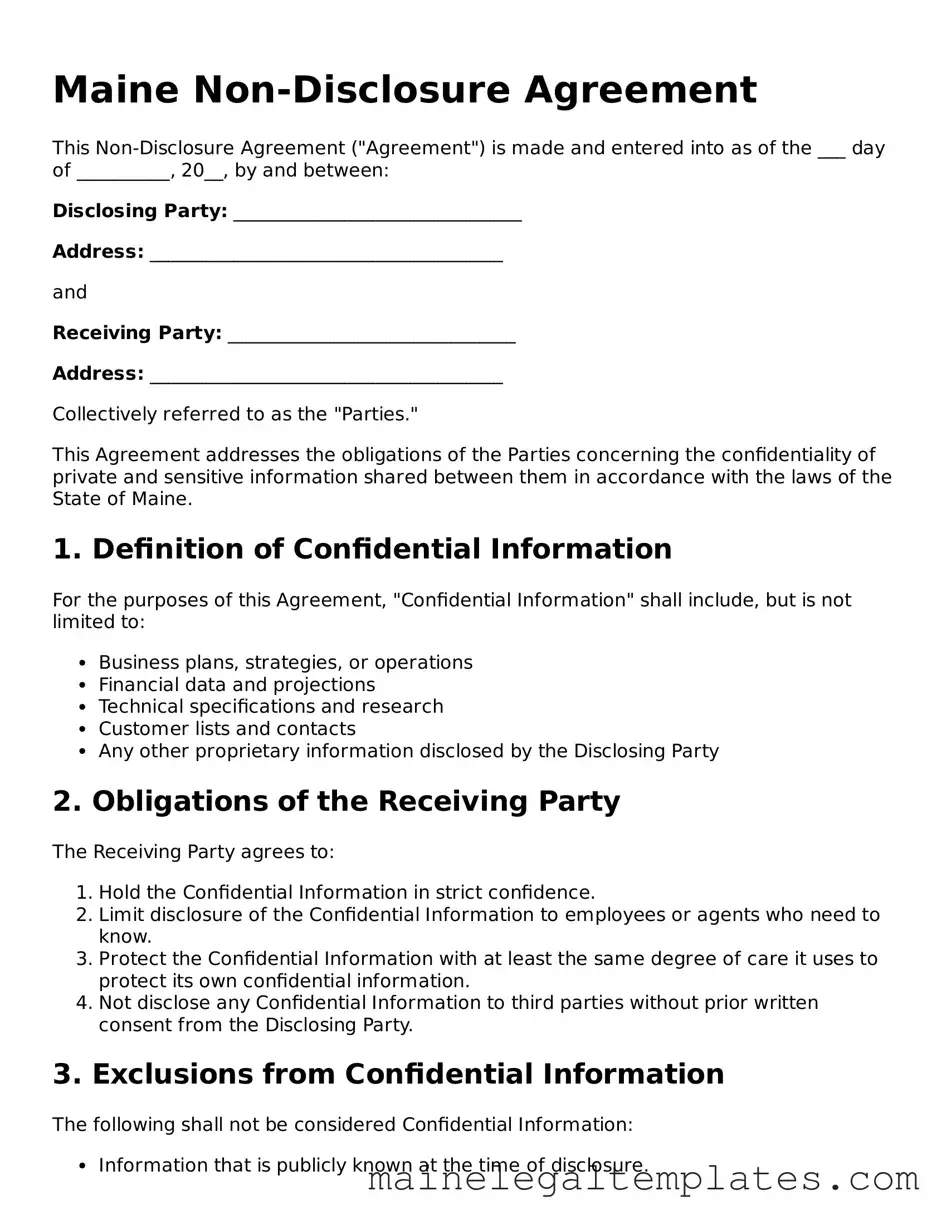Maine Non-Disclosure Agreement
This Non-Disclosure Agreement ("Agreement") is made and entered into as of the ___ day of __________, 20__, by and between:
Disclosing Party: _______________________________
Address: ______________________________________
and
Receiving Party: _______________________________
Address: ______________________________________
Collectively referred to as the "Parties."
This Agreement addresses the obligations of the Parties concerning the confidentiality of private and sensitive information shared between them in accordance with the laws of the State of Maine.
1. Definition of Confidential Information
For the purposes of this Agreement, "Confidential Information" shall include, but is not limited to:
- Business plans, strategies, or operations
- Financial data and projections
- Technical specifications and research
- Customer lists and contacts
- Any other proprietary information disclosed by the Disclosing Party
2. Obligations of the Receiving Party
The Receiving Party agrees to:
- Hold the Confidential Information in strict confidence.
- Limit disclosure of the Confidential Information to employees or agents who need to know.
- Protect the Confidential Information with at least the same degree of care it uses to protect its own confidential information.
- Not disclose any Confidential Information to third parties without prior written consent from the Disclosing Party.
3. Exclusions from Confidential Information
The following shall not be considered Confidential Information:
- Information that is publicly known at the time of disclosure.
- Information that becomes publicly known through no fault of the Receiving Party.
- Information that is disclosed to the Receiving Party by a third party without restriction.
- Information that the Receiving Party can demonstrate was independently developed.
4. Duration of Agreement
This Agreement shall remain in effect for a period of ___ years from the date of disclosure of the Confidential Information.
5. Return of Materials
Upon the termination of this Agreement or upon request, the Receiving Party shall promptly return or destroy all materials containing Confidential Information.
6. Governing Law
This Agreement shall be governed by the laws of the State of Maine.
7. Acceptance and Signatures
The Parties indicate their acceptance of this Agreement by their signatures below:
Disclosing Party:
_____________________________ Date: __________________
Receiving Party:
_____________________________ Date: __________________
This Agreement is made in good faith, aiming to protect the interests of both Parties while fostering a trusting relationship.
